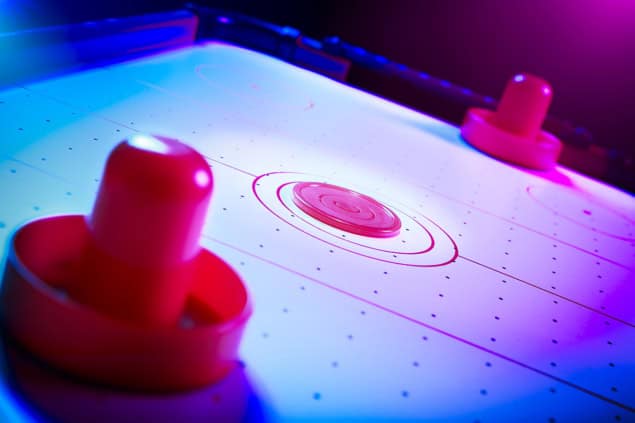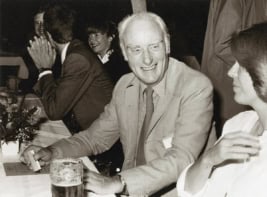Richard Easther and Frank Wang argue that a “Newton first” approach to undergraduate physics teaching can give students a better insight than focusing solely on “modern physics”

The top two physics books on Goodreads are Stephen Hawking’s A Brief History of Time and Brian Greene’s The Elegant Universe. Both tomes focus on the quest for a “theory of everything” – physics so advanced it is not yet discovered. Much of the “shop window” of popular physics in bookshops is filled with ideas whose bewildering complexity underwrites their allure – strings, extra dimensions or multiverse cosmology. This is in contrast to music or art, where the classics tend to be more popular than avant-garde compositions.
For teachers and communicators of physics, it is easy to key into this fascination for novel ideas. After all, students are often more attracted to quantum mechanics than thermodynamics. Yet while relativity and quantum mechanics are classed as “modern physics” they are anything but. The decadus mirabilis in which quantum mechanics bloomed is a century old. The work of Erwin Schrödinger and Werner Heisenberg is now closer to Faraday’s discovery of electromagnetic induction than to the present day.
In the classroom, physics often gives far more space than other sciences to centuries-old ideas. As physicists, we know that new developments largely embrace and extend existing ideas. Indeed, about a third of most undergraduate first-year physics textbooks – statics, dynamics, circular motion and waves – are firmly “Newtonian”. But with a focus on new ideas, it can be a struggle to maintain students’ interest for the full depth of physics’ repertoire.
This need to make physics more appealing for newcomers was on our minds when we recently refreshed the University of Auckland’s physics curriculum. Beyond revamping the delivery of core material, we also challenged ourselves to create a “pop Newton” course that presents physics as a coherent whole and is open to any undergraduate, not just physics students.
The course treads similar ground to the well-known book – and widely taught course – Physics For Poets by Robert March, which is a breezy survey from Newton through to the Standard Model of particle physics, using only simple algebra. However, simply passing high-school algebra does not guarantee the fluency needed to draw insight from algebraic arguments.
Instead, we decided to work with metaphor and visualization, as happens already, for example, when describing black-hole mergers in an introductory astronomy course. There are many strategies to explain the nature of space–time without resorting to tensor calculus. Yet the simplicity of Newtonian mechanics seems to have prevented the development of similar explanatory tools when it comes to more everyday physics.
This was not so much physics for poets as it was physics via poetry.
From Newton to the LHC
Our approach began with two-body interactions on toy air-hockey tables. Students videoed collisions between plastic pucks and replicated them in a pre-programmed Javascript simulator that runs in a web browser. We explained that the simulator implemented Newton’s laws: nothing changes how it is moving unless it is pushed; the more you push the bigger the change, but the bigger the object the smaller the change; and if you push on something, it pushes back.
This exercise opened the door to discussions on a huge range of phenomena without using algebra, much less calculus. For example, does neutron decay make sense if it leaves only an electron and a proton? (Answer: it doesn’t.) Students could put many particles into the simulator and watch as their speeds take on the Maxwell–Boltzman distribution, showing the genesis of statistical mechanics. Mix one big particle and many little particles and then hide the little particles on screen and Brownian motion appears. This allowed us to replicate the arguments that led to the explanation of atoms.
Over a few weeks, we drew a conceptual line from the simplest two-body collisions through to CERN’s Large Hadron Collider. The emergent properties of many-body systems then led to a discussion of reductionist explanations of complex phenomena. We looked at materials science (including quantum mechanics), climate dynamics and infectious-disease transmission. We drew on the expertise of Auckland physicists who work on climate and who made key contributions to New Zealand’s COVID-modelling efforts. In that way, we also showcased the range of problems addressed via physics and its methods. Ironically, post-pandemic staffing constraints have made it difficult to replicate this pedagogical experiment. However, even as a one-off, it showed the clear value in an approach that foregrounds the coherence and historical sweep of physics.
Deep progress in physics is measured on a clock that ticks in centuries
We also wanted to avoid giving the impression that physics is “solved” at a fundamental level. Firstly, its applications continue to reshape the world. Quantum technologies are cutting edge, even though quantum mechanics existed alongside the Model T Ford and we can now illustrate Newton’s laws of motion with spacecraft as well as cannonballs. But it is true that a large majority of physicists are applying physics to new problems, rather than seeking “new physics”.
Deep progress in physics is measured on a clock that ticks in centuries. We believe we must highlight the long narrative arc of the field, which is a profound story of its own. While 95% of the universe is currently unknown to physics, the story comes full circle when we recall that the dark material in the universe is revealed in part via apparent inconsistencies with Newtonian mechanics on galactic scales.
And one last conclusion: a lab session with a roomful of students playing air hockey is noisy fun.



